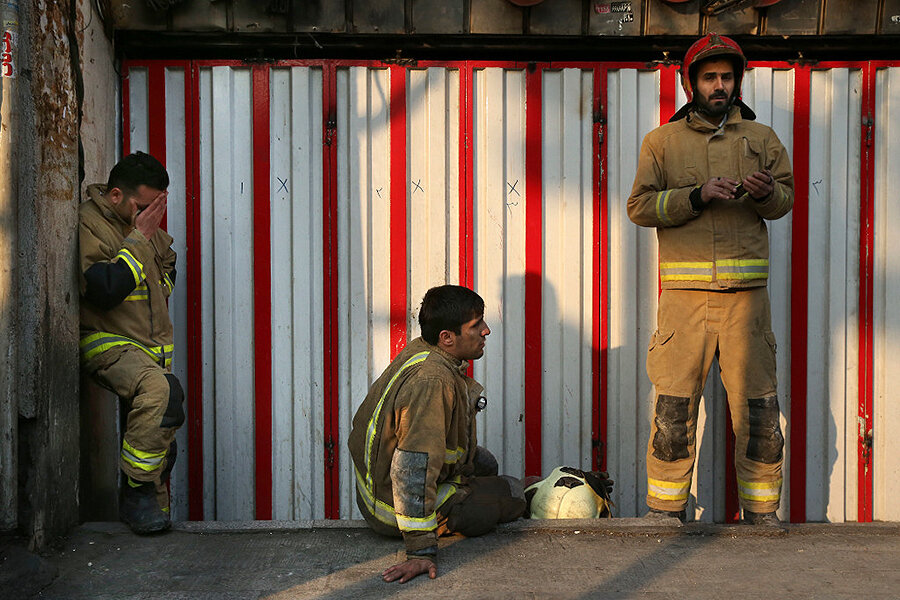As rescue efforts continue, Rouhani calls for investigation of Tehran high-rise fire
Loading...
Rescue efforts continued Thursday afternoon in Iran, where one of the capital's landmark buildings collapsed earlier in the day as firefighters fought to put out a blaze.
On Thursday morning, the Plasco building – located just north of Tehran’s bazaar – went up in flames. Ten firehouses responded to the incident, a fire department spokesman told Iranian state TV. The blaze was first reported at about 8 a.m., and firefighters worked for hours as residents were evacuated, trying to tame the blaze before the building eventually collapsed.
In the wake of the fire, rescue services have mobilized amid an outpouring of support for those affected. Iranian President Hassan Rouhani, meanwhile, has called on government officials to determine the causes of the fire.
Iran’s first private high-rise, the 17-story Plasco building was constructed by Iranian-Jewish businessman Habib Elghanian, and named after his plastics company, the Associated Press reported. Though Mr. Elghanian himself was brought up on espionage charges and executed shortly after the 1979 Iranian Revolution, the building has remained a feature of the Tehran skyline for more than half a century. The building had numerous tenants, with garment workshops occupying the upper floors of the building.
The response effort has been extensive. Hundreds of people have donated blood, Al Jazeera reported, while soldiers, sniffer dogs, and rescue workers have come together to find the approximately 25 firefighters who were reportedly trapped in the building when it collapsed.
Thanks to evacuation efforts, “no ordinary civilians” were trapped under the rubble, according to Tehran’s mayor, Mohammad Bagher Ghalibaf. Witnesses, however, suggested that some people may have slipped back into the building, past the police cordon, in an attempt to rescue their belongings. Around the scene, people continue to search for their family members.
Mr. Rouhani asked the Interior Department to investigate the causes of the fire and produce a report, state news agency IRNA reported. He also said that those affected by the blaze would be compensated, offering a degree of security to those who have lost their livelihoods.
The building's fire safety may have needed improvement, local officials suggested. On the upper floors of the building, tailors cooked for themselves and kept warm with old kerosene heaters, in rooms filled with flammable fabric.
"They stacked up material on staircases, which was very awful, although we warned them many times," fire department spokesman Jalal Maleki told state TV, according to the AP.
Maleki noted that the building “lacked fire extinguishers” and said the municipality had called for building managers to improve safety many times over the past few months, as Reuters reported.
Material from the Associated Press and Reuters contributed to this report.








